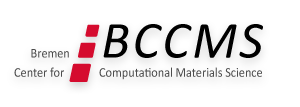Further Information
One of the grand challenges that we face today is the development of sustainable technologies to address fundamental societal needs such as clean air, clean water and clean energy supplies. In this regard, nanotechnology holds great promise because controlling the composition and structure at the nanoscale leads to greater controls of the physical and chemical properties – thus the functions – of materials. Nanotechnology has already led to numerous applications in the areas of battery, electronics, water desalination, drug/gene delivery, and diagnostics. Considering these trends, there is little doubt that the impact of nanotechnology will only increase in the future.
Given the tremendous impact of nanotechnology, it is also important to consider the sustainability of nanotechnologies, particularly their potential to elicit detrimental biological outcomes. The small size and often reactive nature of nanomaterials raise concern about their potential environmental, health and safety (EHS) impacts. This has been realized, for example, from the very beginning of the National Nano Initiative in the US, which encouraged programs that systematically analyze EHS issues of nanotechnology. However, the interactions between nanomaterials and biological systems are complex and involve physical, chemical and biological processes that span broad length and spatial scales. Therefore, to properly address the EHS issues of nanotechnology, it is essential to understand the mechanistic details of nanomaterials/biological system interactions; i.e., it is essential to establish causality, rather than correlations, in how nanomaterials impact biological outcomes. Only with this level of understanding can we design the next generation of nanomaterials that are functional yet with minimal deleterious EHS concerns.
Bearing such consideration in mind, through this CECAM workshop, we bring together leading researchers in both experimental and computational communities to help define the most pressing challenges and opportunities for better understanding the nano/bio interface.
